Peoria Audubon Society is a local affiliate of both:
National Audubon Society & Illinois Audubon Society

Birding the Illinois River: Emiquon
Photo Gallery:
Field Trip: Saturday March 5, 2011 Next Page 1 2
Many thanks for Mike Miller and JD Russell of the Peoria Park District and to Maury Brucker of the Peoria Audubon Society for organizing and leading our Spring 2011 Birding Along the Illinois River field trip. We filled two 15-passenger Peoria Park District vans and a smaller van with food and drinks for a day of birding. The timing in early March was picked to match the northward peak of the Spring Migration of waterfowl.
In the past couple of weeks, warm temperatures and rain had melted away the ice in the backwater lakes of the Illinois River. And as soon as the ice was unfrozen, the ducks seemed ready to head north.
On our first stop at Banner Marsh, we were treated with a large assortment of duck species and other waterfowl to look at. Unfortunately, the long distances made use of spotting scopes a necessity.
Dennis Endicott of the Peoria Audubon Society provided the photos for the Gallery.
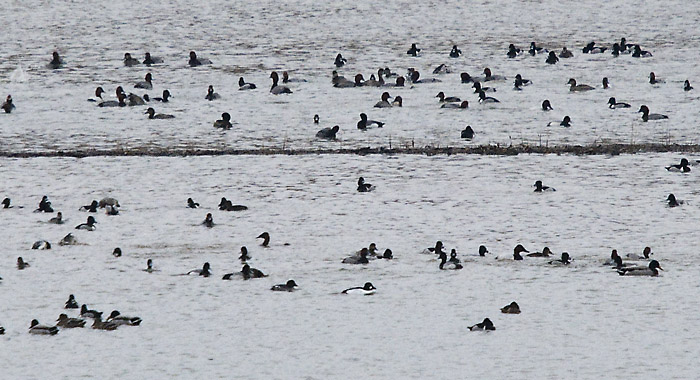
Ducks at Banner Marsh
There were a number of Mute Swans at Banner Marsh that were fairly close to the vans as we drove by for a look. During the day of birding, the vans became somewhat of a portable blind for viewing.
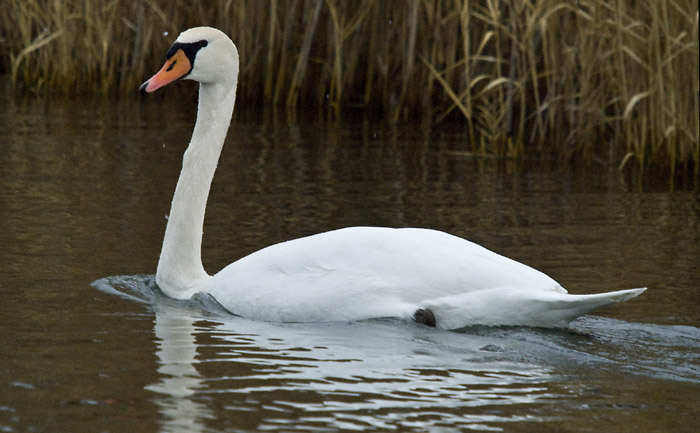
Mute Swan at Banner Marsh
Note that the Mute Swans are a non-native species that were introduced to the U.S. from Northern Europe. Maury explained that in some areas, Mute Swans have become so successful at establishing a breeding population, that they may start to become a nuisance in that they compete with native waterfowl for food and habitat.
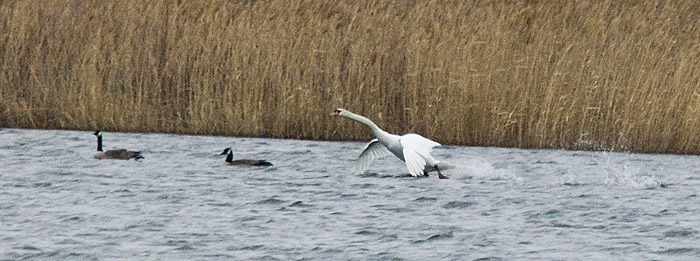
Mute Swan Taking Flight at Banner Marsh
In the above picture, a Mute Swan is building up speed to take flight. Note how much larger the swan is than the two Canada Geese in the same image. Part of the concern with a breeding population of Mute Swans is that with their larger size, they tend to be higher in the "pecking order" for establishing a nesting site and compete for a very large portion of the available food.
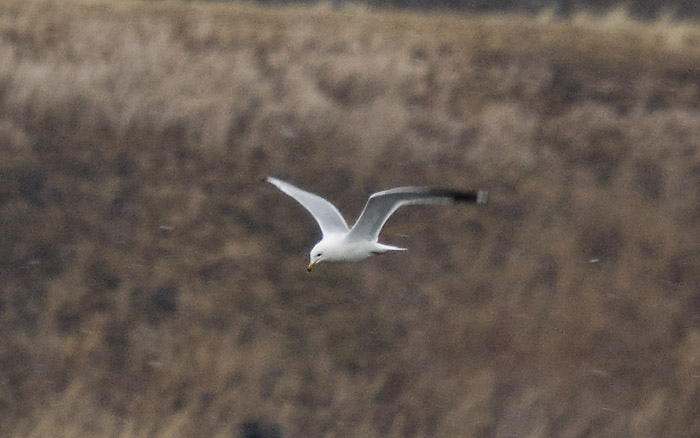
Ring-billed Gull at Banner Marsh
A Ring-billed Gull was flying by. Note that this is the most common gull species we have in Central Illinois.
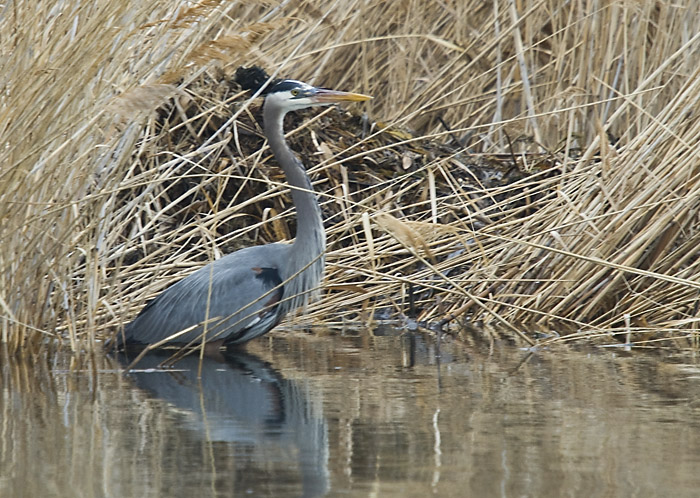
Great Blue Heron at Banner Marsh
As we drove along Banner Marsh, a Great Blue Heron was at the edge of the grasses waiting for food to swim by. After a Winter of frozen lakes, the herons should be grateful for the opportunity to hunt for food.
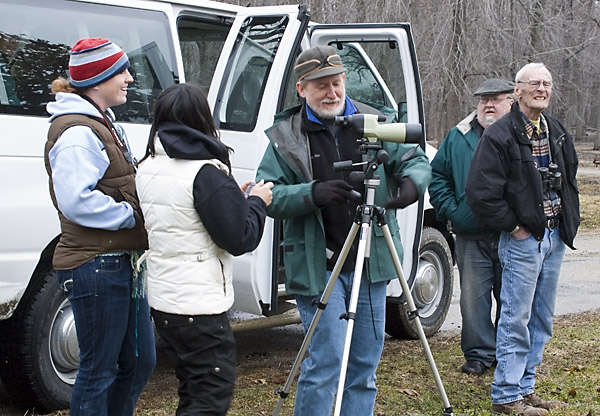
Mike Miller Setting Up the Spotting Scope
Trip organizer Mike Miller is setting up a spotting scope for everyone to use.
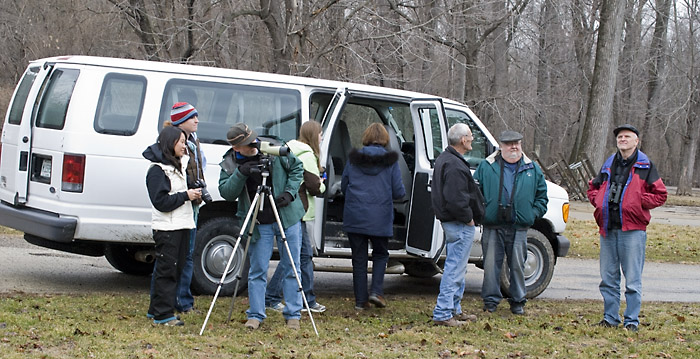
Enjoying the Outdoors at Rice Lake
After being in the van for the trip from Forest Park Nature Center in Peoria Heights, the group was very glad to just get out of the van and enjoy the sunshine. For most of the trip, the sky remained overcast. Dennis indicated that even though the overcast conditions was somewhat gloomy, the lack of direct sunshine helped reduce the thermal distortions or shimmers that we would have to look through over the distance with our spotting scopes.
Another benefit of 'lousy' weather for birding is that the birds tend to "hunker down" as they prefer to not fly in rain or inclement weather. Thus the odds for finding birds to see would be somewhat improved.
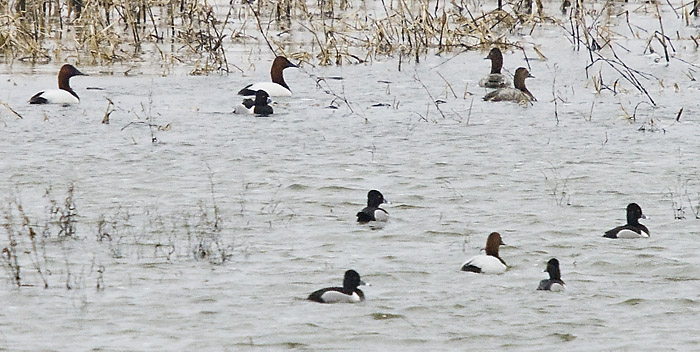
Ring-necked and Canvasback Ducks near Emiquon
As we drove to Emiquon, we passed a number of flooded fields. From our vantage point of the van, we had a nice view of several duck species.
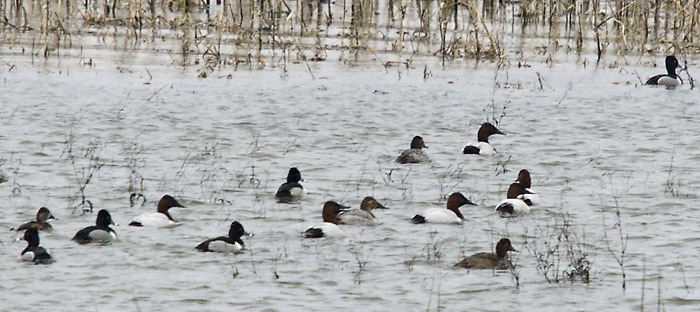
Ring-necked and Canvasback Ducks near Emiquon
The above image of ducks was taken by Dennis riding shotgun on the passenger side of the van.
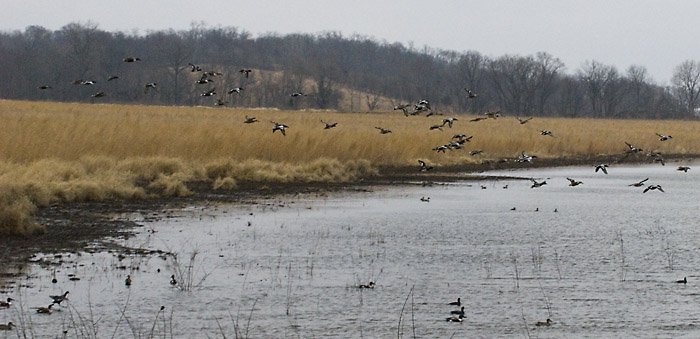
Ducks Flying in to Emiquon
At the Emiquon restoration project, many of the waterfowl species were flocking together.
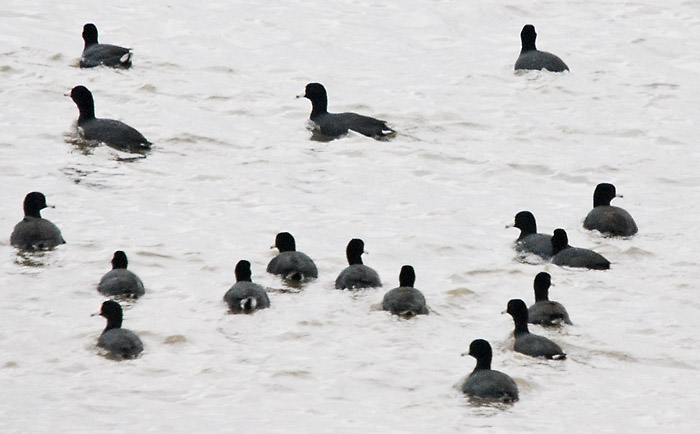
American Coots at Emiquon
There were several flocks of American Coots at Emiquon. Coots used to be known as "Marsh Hens" or "Mud Hens" due to the way their heads bob when they walk or swim. Also, they swim like a duck, but do not have webbed feet. Instead, their three toes have lobes on the sides of each segment to provide a means of paddling in the water.

Blue-winged Teal and Redhead Ducks Flying Over Emiquon
Several duck species were moving about in small flocks.
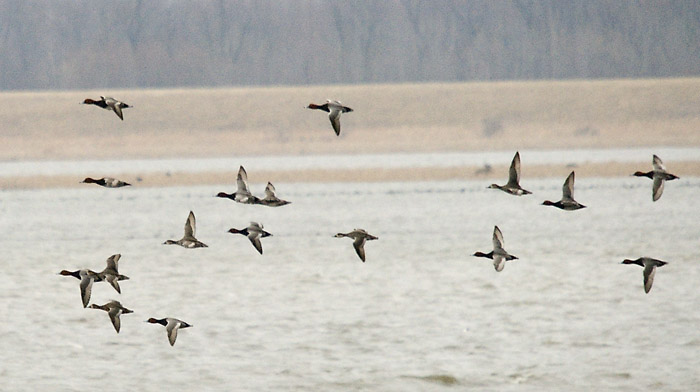
Blue-winged Teal and Redhead Ducks Flying Over Emiquon
Redheads are medium sized diving ducks. According to ibird, the adult males have a blue bill, a red head and neck, a black breast. They overwinter in the southern and north-eastern United States, northern Mexico and the Caribbean. These ducks are on their migratory route to the northwest.
Snow Geese and other water fowl are on the next Gallery Page.